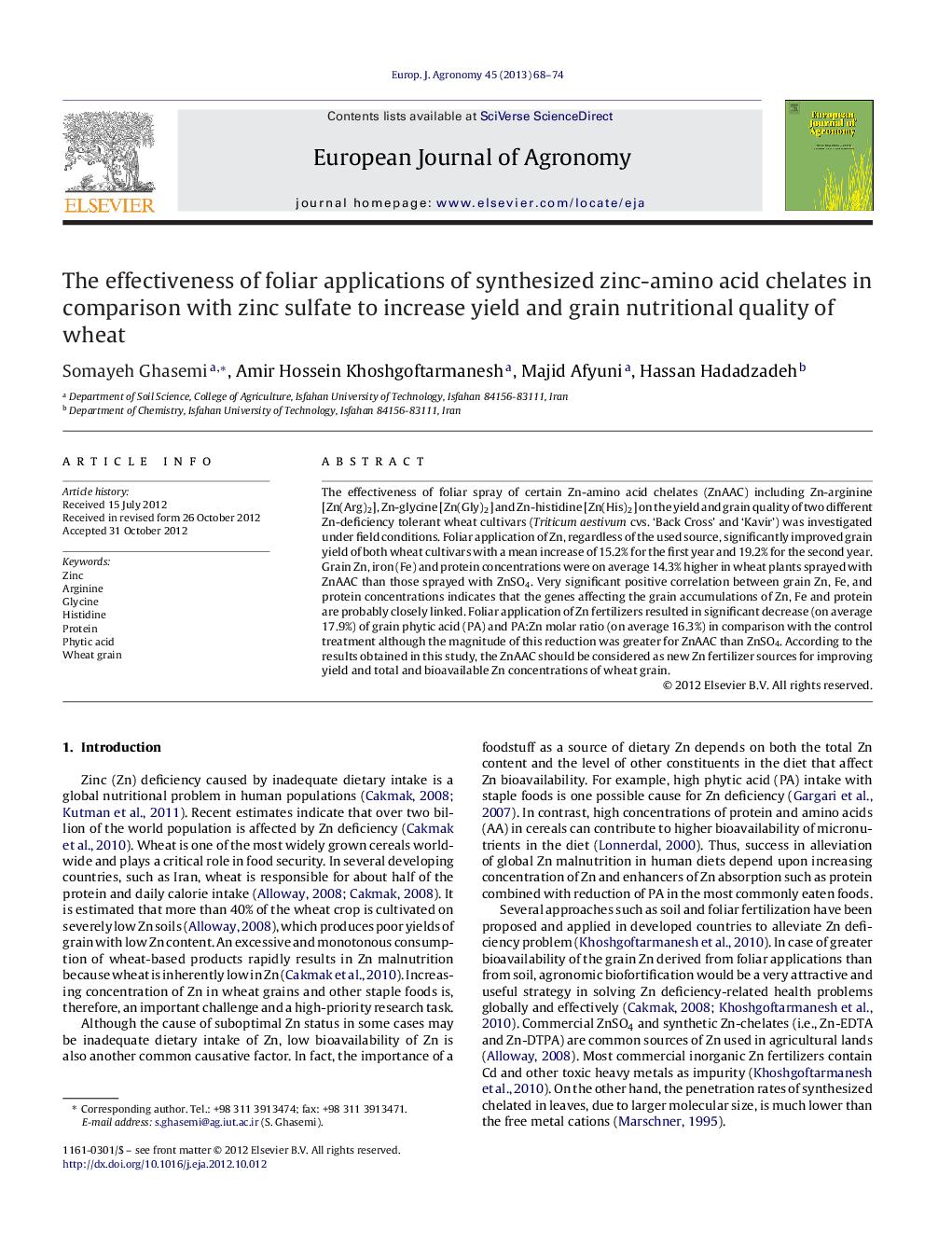| Article ID | Journal | Published Year | Pages | File Type |
|---|---|---|---|---|
| 4509058 | European Journal of Agronomy | 2013 | 7 Pages |
The effectiveness of foliar spray of certain Zn-amino acid chelates (ZnAAC) including Zn-arginine [Zn(Arg)2], Zn-glycine [Zn(Gly)2] and Zn-histidine [Zn(His)2] on the yield and grain quality of two different Zn-deficiency tolerant wheat cultivars (Triticum aestivum cvs. ‘Back Cross’ and ‘Kavir’) was investigated under field conditions. Foliar application of Zn, regardless of the used source, significantly improved grain yield of both wheat cultivars with a mean increase of 15.2% for the first year and 19.2% for the second year. Grain Zn, iron (Fe) and protein concentrations were on average 14.3% higher in wheat plants sprayed with ZnAAC than those sprayed with ZnSO4. Very significant positive correlation between grain Zn, Fe, and protein concentrations indicates that the genes affecting the grain accumulations of Zn, Fe and protein are probably closely linked. Foliar application of Zn fertilizers resulted in significant decrease (on average 17.9%) of grain phytic acid (PA) and PA:Zn molar ratio (on average 16.3%) in comparison with the control treatment although the magnitude of this reduction was greater for ZnAAC than ZnSO4. According to the results obtained in this study, the ZnAAC should be considered as new Zn fertilizer sources for improving yield and total and bioavailable Zn concentrations of wheat grain.
► Foliar spray of Zn-amino acid complexes (ZnAAC) and ZnSO4 improved grain yield and quality of wheat. ► ZnAAC were more effective to increase of grain Zn, Fe and protein concentrations. ► The effect of ZnAAC in reduction of grain PA to Zn molar ratio was higher than ZnSO4. ► ZnAAC increase grain Zn concentration and makes it more bioavailable to the consumer.
